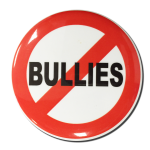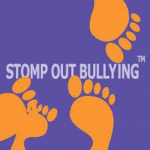Kids Photo Gallery | Kids Art Gallery | Kids Comments | Kids: Self-Esteem Statistics | Kids: Bullying Statistics | Parenting Tips: Kids Empowerment | Hot Topics | Supportive Research: Kids Healthy Self-Esteem | Bullying Has Got To Go Research & Resources
 As Jane’s talking goldfish Oracle would say, “Bub A Lo, bullying has GOT to go!”
As Jane’s talking goldfish Oracle would say, “Bub A Lo, bullying has GOT to go!”
JNP (Jane NOT Plain) wholeheartedly agrees.
As Jane’s talking goldfish Oracle (in Jane & Jake’s Adventures in Awesome kids’ chapter book series) would say, “Bub A Lo, bullying has GOT to go!”
JNP wholeheartedly agrees. But…we can’t do this work alone. Preventing, reducing, and healing bullying needs you on our Inner Awesome Team, especially in October, during National Bullying Prevention Month.
Ready to join us? Read a fact…explore a resource…then choose to spread an Inner Awesome Message within your family, with your friends, among your colleagues. Thank you!
RESEARCH
Note: Items below are directly quoted from the given source. Additional JNP bullying research and data is available here.
 BULLYING DEFINITION (2010)
BULLYING DEFINITION (2010)
- Bullying is a form of youth violence. Although definitions of bullying vary, most agree that bullying includes:
- Attack or intimidation with the intention to cause fear, distress, or harm;
- A real or perceived imbalance of power between the bully and the victim; and
- Repeated attacks or intimidation between the same children over time.
Source: Farrington DP, Ttofi MM. School-based programs to reduce bullying and victimization. Systematic review for The Campbell Collaboration Crime and Justice Group; 2010. Available at www.ncjrs.gov/pdffiles1/nij/grants/229377.pdf
BULLYING AND HEALTH
- Bullying can result in physical injury, social and emotional distress, and even death.
- Victimized youth are at increased risk for depression, anxiety, sleep difficulties, and poor school adjustment.
- Youth who bully others are at increased risk for substance use, academic problems, and violence later in adolescence and adulthood.
- Compared to youth who only bully, or who are only victims, bully-victims suffer the most serious consequences and are at greater risk for both mental health and behavior problems
Source: Smokowski PR, Kopasz KH. Bullying in school: An overview of types, effects, family characteristics, and intervention strategies. Children and Schools 2005; 27:101-109; quoted in Centers for Disease Control and Prevention. Youth risk behavior surveillance—United States, 2011. MMWR, Surveillance Summaries 2012;61(no. SS-4). Available at www.cdc.gov/mmwr/pdf/ss/ss6104.pdf
THE BULLY AND THE BULLY TARGET
- Some of the factors associated with a higher likelihood of engaging in bullying behavior include:
- Impulsivity (poor self-control)
- Harsh parenting by caregivers
- Attitudes accepting of violence
- Some of the factors associated with a higher likelihood of victimization include:
- Friendship difficulties
- Poor self-esteem
- Perceived by peers as different or quiet
Source: Smokowski PR, Kopasz KH. Bullying in school: An overview of types, effects, family characteristics, and intervention strategies. Children and Schools 2005; 27:101-109; quoted in Centers for Disease Control and Prevention. Youth risk behavior surveillance—United States, 2011. MMWR, Surveillance Summaries 2012;61(no. SS-4). Available at www.cdc.gov/mmwr/pdf/ss/ss6104.pdf
BULLYING IN GRADES 6-12 (2011)
- A higher percentage of students in 6th grade than of students in grades 7 through 12 reported being bullied at school during the school year.
- In 2011, about 37 percent of 6th-graders reported being bullied at school, compared with 30 percent of 7th-graders, 31 percent of 8th- graders, 26 percent of 9th-graders, 28 percent of 10th-graders, 24 percent of 11th-graders, and 22 percent of 12th-graders.
Source: “Indicators of School Crime and Safety: 2012” U.S. Department of Justice, Office of Justice Programs, Bureau of Justice Statistics Executive Summary available at http://www.bjs.gov/content/pub/pdf/iscs12.pdf
ASSORTED CYBERBULLYING RESEARCH FACTS
- Traditional bullying is still more common than cyberbullying. Cyberbullying is related to low self-esteem, suicidal ideation, anger, frustration, and a variety of other emotional and psychological problems.
- Traditional bullying and cyberbullying are closely related: those who are bullied at school are bullied online and those who bully at school bully online.
[Editor’s note: Below are some preliminary data statistics collected from 400 students, ages 11-14, at one middle school in October 2013.]
- 5% have been online in the previous 30 days
- 63% have a cell phone
- 45% are on Facebook
- 42% are on Instagram
- 5% have been the target of cyberbullying in the previous 30 days (boys: 6.8%; girls: 16.0%)
- 9% have cyberbullied others in the previous 30 days (boys: 0.6%; girls: 6.9%)
Source: Cyberbullying Research Center Available at http://cyberbullying.us/facts/
BULLYING AND SCHOOL CLIMATE
- Studies have also shown that students feel less safe in large schools and that verbal bullying is more likely to occur at such schools.
- Research showed that up to 25% of the U.S. students are bullied each year.
- As many as 160,000 students may stay home from school on any given day because they are afraid of being bullied.
- A recent study of more than 2,000 students of ages 12 to 16 found that those who witnessed bullying reported more feelings of depression, anxiety, hostility, and inferiority than either the bullies or victims themselves.
Source: “School Climate and Bully Prevention,” February 2013 by Jonathan Cohen and JoAnn Freiberg Available at http://www.schoolclimate.org/publications/documents/sc-brief-bully-prevention.pdf
RESOURCES
NATIONAL BULLYING PREVENTION MONTH
- Did you know? October is National Bullying Prevention Month. Begun in 2006 by PACER’S National Bullying Prevention Center as Bullying Prevention and Awareness Week, by 2010 the tremendous response from schools, organizations, and corporations clearly signaled a strong need for expansion. Check out PACER’S National Bullying Prevention Center (“The End of Bullying Begins with You.”) website here for more information about this month-long event and to scoop up some of their amazing free bullying awareness/prevention resources.
BOOKS FOR KIDS
- Flipping negative self-talk—a frequent byproduct of being bullied—to words that affirm positive worth is the theme of this kids’ book, Nobody! (A Story about Overcoming Bullying in Schools) by Erin Frankel. Thomas, a young boy, is being relentlessly bullied at school by Kyle, making Thomas feel like “a nobody.” But what if being different actually means that nobody is like him—which makes him a SOMEBODY! Thomas concludes : “I’ve decided that nobody can make me feel like a nobody.” Includes questions and activities. “Reading Level Grade 2; Interest Level Ages 5-9.” Note: A free Nobody! downloadable Leader’s Guide is available from the publisher here.
BOOKS FOR CARING ADULTS (coming soon)
VIDEOS
- Check out these powerful and inspiring YouTube videos made by kids about how bullying uses language to hurt and how we—kids and adults—can use language to heal: “Make the Difference” and “Stand Up, Stand Strong: The Consequence of Words.”
- Fourteen-year-old Lauren knew that words have enormous power to hurt or to heal. So she decided to make this the focus of a media class assignment: a two-minute film called “Word Play.” What she didn’t guess was her message’s impact or its reach—including an invitation to appear on the Today show. For a dose of instant inspiration, watch her film here.
- Caitlin, a teen who received a message on Facebook telling her that she should die, decided to act. Fast. Not by retaliating. Not by waging an anti-bullying campaign. By spreading her version of Inner Awesome Messages…literally…throughout her school. Check out this soaring story of the amazing #Positive Post It campaign that she began—and which took off throughout her city. Note: the city council of Airedrie, Alberta, where Caitlyn lives, declared October 9 Positive Post-It Day! Idea: Where could you leave some Positive Post It messages today? (Make sure you include at least one for yourself.) Here’s a Positive Post It from JNP to you: You are a one-of-a-kind gift to the world. Yes,
MUSIC
· This award-winning 2011 album, All About Bullies…Big and Small, with 37 songs and poems created for kids (and the grown-ups who love them) as a fundraiser for The Pacer Center’s Kids Against Bullying, is available to listen for free here. (The CD is also available for purchase.) One irresistible, got-to-sing-along song is Courage by Peter Alsop; a rhythmic (danceable!), upbeat song for upper elementary and older kids (and adults) about life’s ups and downs is Jump Rope by Blue October Fantastic conversation starters!
OTHER ACTIVITIES (coming soon)




